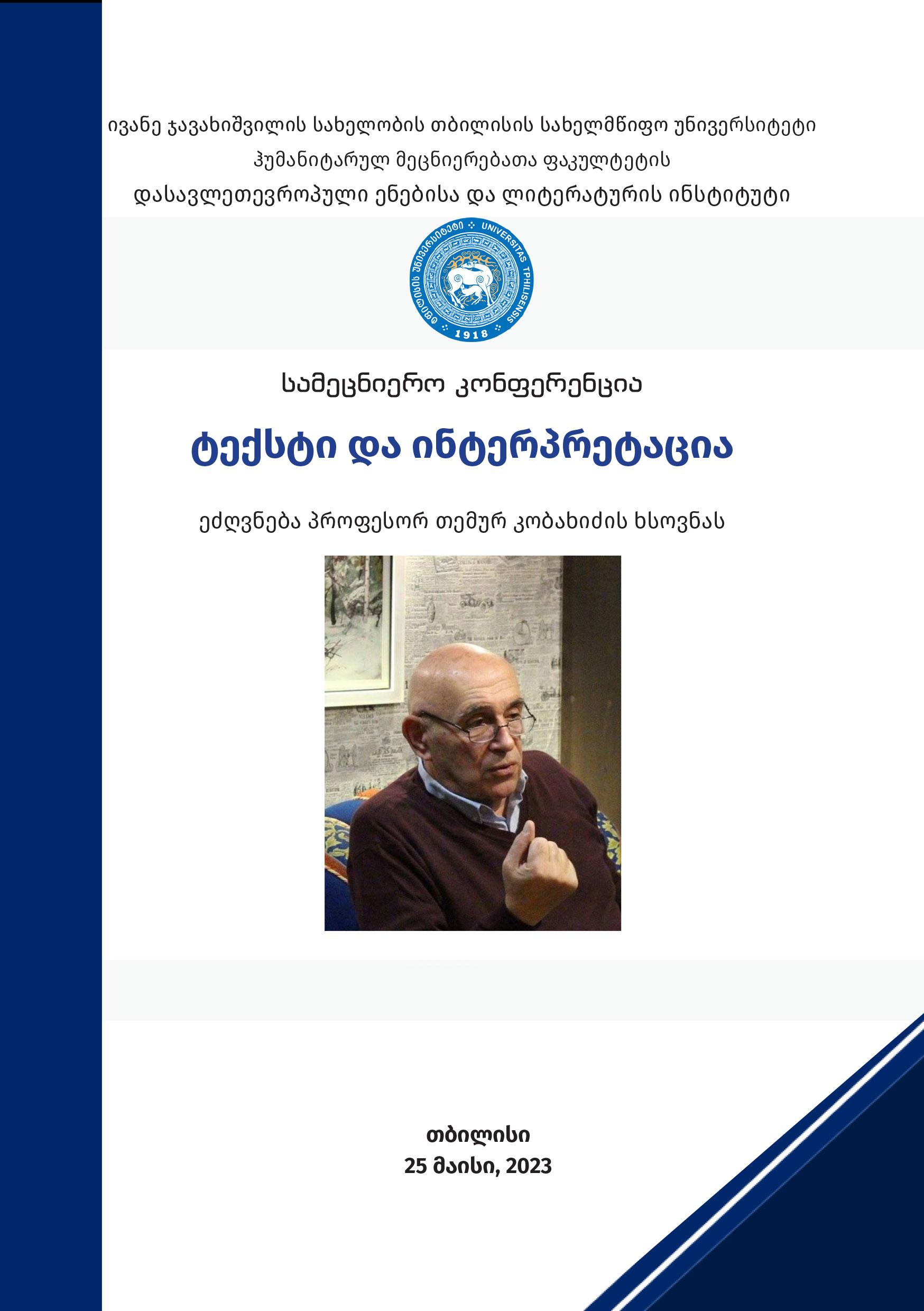An Analysis of the Scene “The Mousetrap” in Shakespeare's Hamlet from the Point of View of Psychosynthesis.
DOI:
https://doi.org/10.55804/jtsu-2960-9461-2023-1Keywords:
Hamlet, teater, mirror, experiment, Psychosynthesis.Abstract
“Theater is a mirror” (Shakespeare Hamlet) where we can see ourselves and the face of society. For Shakespeare, as a researcher of human nature, the theater is the main instrument for understanding the essence of man and the art of becoming a person. For him, the world is a theater and the theater is a mirror of the world.
Shakespeare’s Hamlet is an ode to the theater!
The mirror, as a means of spiritual reflection and self-awareness (gnothi seauton), Plato describes in his dialogues. (Alcibiades 1;2)
Socrates, in response to Alcibiades’ question, answers that it is possible to see one’s own soul only in the gaze of a kind, caring (epimeleia) person toward him, in his eyes, like in the mirror.
The mission of the theater is not to punish the offender (Claudius), but to identify the crime and show the offender its true nature. In order for the theater to fulfill the purpose of a spiritual mirror, it shouldn’t be a weapon, but should take care (epimeleia) so that a person can see his own face in it, no matter how disgusting the image is.
Hamlet does not resort to bloody revenge, does not kill Claudius, but as the true master of the theater, he stages a performance.
Theater gives him access to the truth. And for Claudius, the mirror of his soul.
In the third act of Hamlet where Prince Hamlet stages a theatrical performance called “The Mousetrap”, the author appears in the role of a real researcher, a scientist.
In Hamlet, Shakespeare describes the first psychological experiment, which is the prototype of chrestomathic, associative experiments of the new time (Wilhelm Wundt, Carl Gustav Jung…).
The goals of the theatrical experiment are – 1) to reveal (determine) the guilt of Claudius; 2) to reveal the nature of the father’s ghost – (“it is a damned ghost that we have seen”). 3) self-reflection, assessment of the validity of one’s (Hamlet’s) suspicion – is madness only its simulation or reality.
“Experimental situation” is a theatrical performance. Prince Hamlet and Horatio appear in the group of experimenters. Test subject – King Claudius.
The experimental method is the psychological observation of Claudius’ emotional, affective reactions, mimicry, verbal and non-verbal behavior, specific changes that occur in the course of the performance of the object of observation, compared to the control group.
The control group includes the public, attending the performance, which unlike Claudius, perceives the performance as a text, not related to the actual context of the murder.
“Experimental situation” refers to the organization of the geometry of the theatrical staging environment in the form of circle (globe).
Shakespeare’s Hamlet is not only the model of the first psychological experiment, which, according to the play, unmistakably proved the guilt of the Claudius and dispelled Hamlet’s doubts, but also the prototype of the first art-therapeutic, psychodramatic performance.
Claudius, excited during the performance, leaves the theater, goes to the chapel, falls on his knees and repents of his sins in prayer. Shakespeare describes Claudius’ transformation (metanoia) as modern psychology describes the state of catharsis.
Hamlet is convinced that his father’s murderer is Claudius, he will stand up to him with a sword in his hand, but, seeing the act of repentance, he doesn’t kill him. Theatrical experiment not only revealed the culprit, but led him to a feeling of catharsis!
What can explain the metamorphosis of the murderer, for whom there is nothing new or alien in theatrical performance? Wasn’t he the one who planned the murder and acquired everything he wanted? The context of the murder is unknown to the attending public. What caused him to become nervous and led him to this spiritual transformation?
The reason for catharsis is the strong emotional reaction of the circle of close people to the play!
The circle, which is also a form of Shakespeare’s theater, allows the audience to observe each other’s reactions while observing the drama unfolding on the stage. Their spiritual condition becomes an organic part of the performance.
The theater is a mirror that combines the visible and invisible in one circle, the flesh and the fleshless, the heavenly and the earthly, the sub and the super-conscious, the being and non-being!
Psychosynthesis describes the state of catharsis as a coincidence of two circles - the social, visible circle of important persons and the internal, invisible circle of sub-personas, when one is a mirror of the other!

